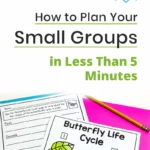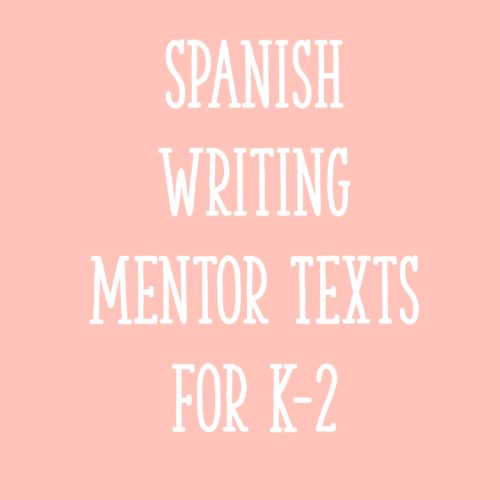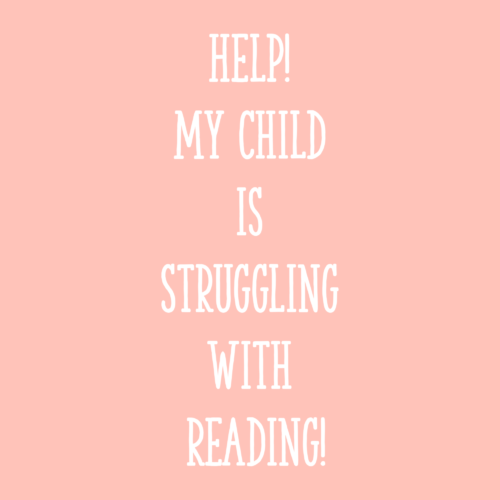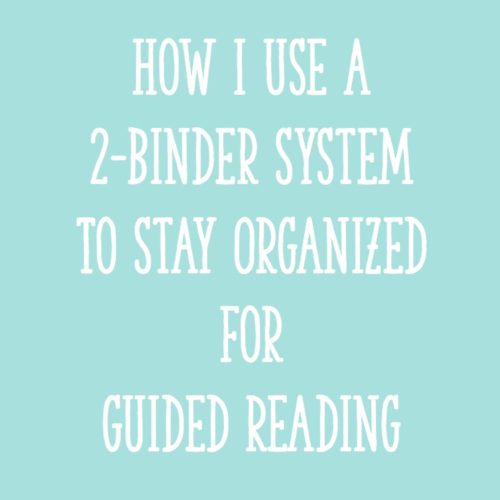Do you feel like you’re spending tons of time finding and prepping activities for literacy centers? Having your center materials organized can save a LOT of time! Otherwise, literacy center prep turns into a time-consuming scavenger hunt around your classroom!
Literacy centers provide students with opportunities to explore, collaborate, and practice skills (after you’ve taught them and provided guided practice). To make the most of this instructional time, you’ll need to have systems and routines set up! Of course, there’s a lot that goes into setting up those routines, but a big part is how materials are organized. In this post, I’ll give you some tips on how to organize your literacy centers.
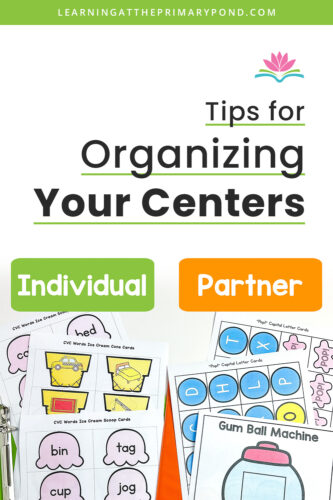
Switching Out Centers
First of all, if you ever struggle to come up with center ideas or create/prep everything, take a look at my Literacy Clubs. We have a Kindergarten Literacy Club and a 1st and 2nd Grade Literacy Club. As a member of the clubs, every month you’ll get brand new materials, including centers, to take the extra hours of prep off of your plate!
One of the challenging things about centers is finding a balance between new activities and familiar activities. On one hand, familiar activities are great, because you don’t have to re-teach directions.
But, on the other hand, if you don’t switch centers around enough, students can get a bit complacent…which can lead to boredom….which can lead to them being off task…which can lead to you being frustrated and unable to focus on small groups!
So you definitely need to change things up, but you’ll also want to limit the number of new centers you’re introducing – to minimize prep time for you and to avoid overwhelming your students.
Here’s a method I like to use: Instead of introducing multiple new centers at the beginning of each week, I designate one day of the week for each center.
For example:
- Monday = partner reading center
- Tuesday = word work center
- Wednesday = independent reading center
- Thursday = writing center
- Friday = listening center
If you have more than 5 centers, you can assign more than one center to each day.
Then, on that center’s designated day, you can do one of two things:
- Introduce a new activity (or a variation of a pre-existing activity)
- Re-teach a procedure or teach a troubleshooting lesson to help students overcome a challenge you’ve noticed them having in that center
Of course, you can still prep all of your centers for the next week ahead of time. You just wait to introduce certain materials rather than putting everything out on Monday.
If you want to read a bit more about this process, check out the blog Why I Don’t Switch Out My Literacy Centers Every Week (And What I Do Instead!)
Organizing Centers for Teachers
Sometimes we have so many centers, that we actually forget what we have! This has definitely happened to me.
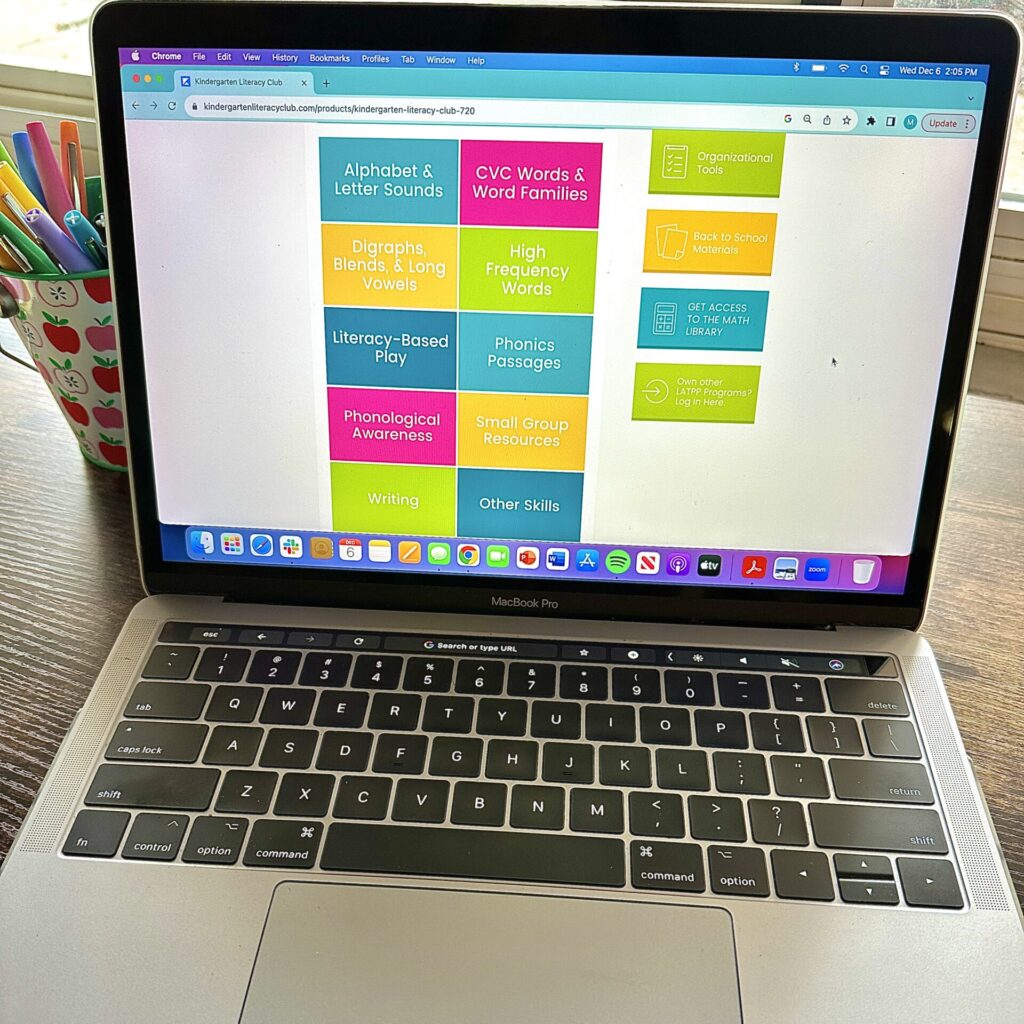
The Literacy Club login area can help you keep track of which centers you have! The sites are organized with materials under each category – such as CVC Words & Word Families, Literacy-Based Play, Alphabet Activities, and Phonics Passages for the Kindergarten Literacy Club. Some example categories from the 1st & 2nd Grade Literacy Club are Grammar, Phonics & Fluency Passages, and Phonics Activities. This really helps you find exactly what you’re looking for without having to search around your classroom!
Additionally, you may want to create a running list of centers you’ve used (perhaps with dates). The longer you teach, the more the years run together, and it can be hard to recall if you’ve already used a center this year!
When you go to organize the actual centers in a list, it’s helpful to have categories like “partner games” and “individual games.”
Then, you can make a binder for each of these categories. The binder holds any master copies. You can also label bin(s) for that center and place hands-on materials or prepared items in the bins.
Organizing Centers for Students
You may have everything organized on your end… but if you don’t have systems of organization for your students, everything will quickly get disorganized! It’s important to be clear to students how centers should be kept and where to access materials.
When it comes to what students carry around the classroom with them, I recommend giving each student a sturdy independent work folder to use. All of the student’s paper-and-pencil work for centers goes in the folder. The side with the red sticker is for finished work (work that I can review) and the side with the green sticker is for work in progress.
You can still use these folders if students stay at their seats for centers, of course.
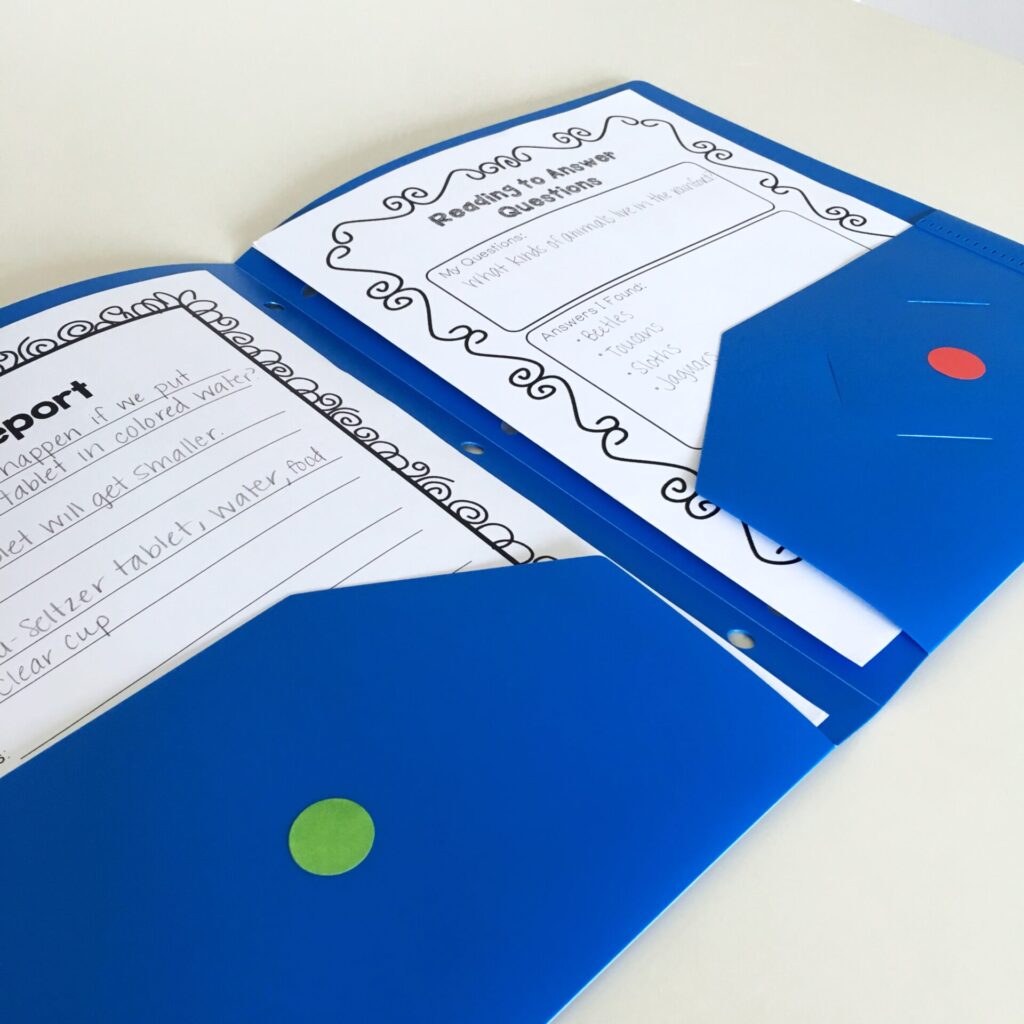
When I’m working with students who can read, I also give them a book bag or bin. If your students are moving to different centers in the classroom, a book bag can be easier. They might use their book bag in the independent reading center, partner reading center, or writing/reading response center, for example.
At each center, I keep everything that students will need in plastic bags or manila envelopes inside storage tubs. This makes for relatively easy clean-up. It also helps when it’s time to change the center out because I can just grab the materials and swap them!

You’ll definitely want to take some time to model and teach students how to return center materials to their appropriate locations.
Lastly, you’ll want to consider how to organize differentiated materials. For instance, maybe one group is working on double final consonant words and another is ready for r-controlled words. If students know to grab their color-coded folder or bin, that makes differentiation so much easier!
By the way – differentiated centers such as these pictured below are included in your Literacy Club monthly materials to make prep less stressful for you!
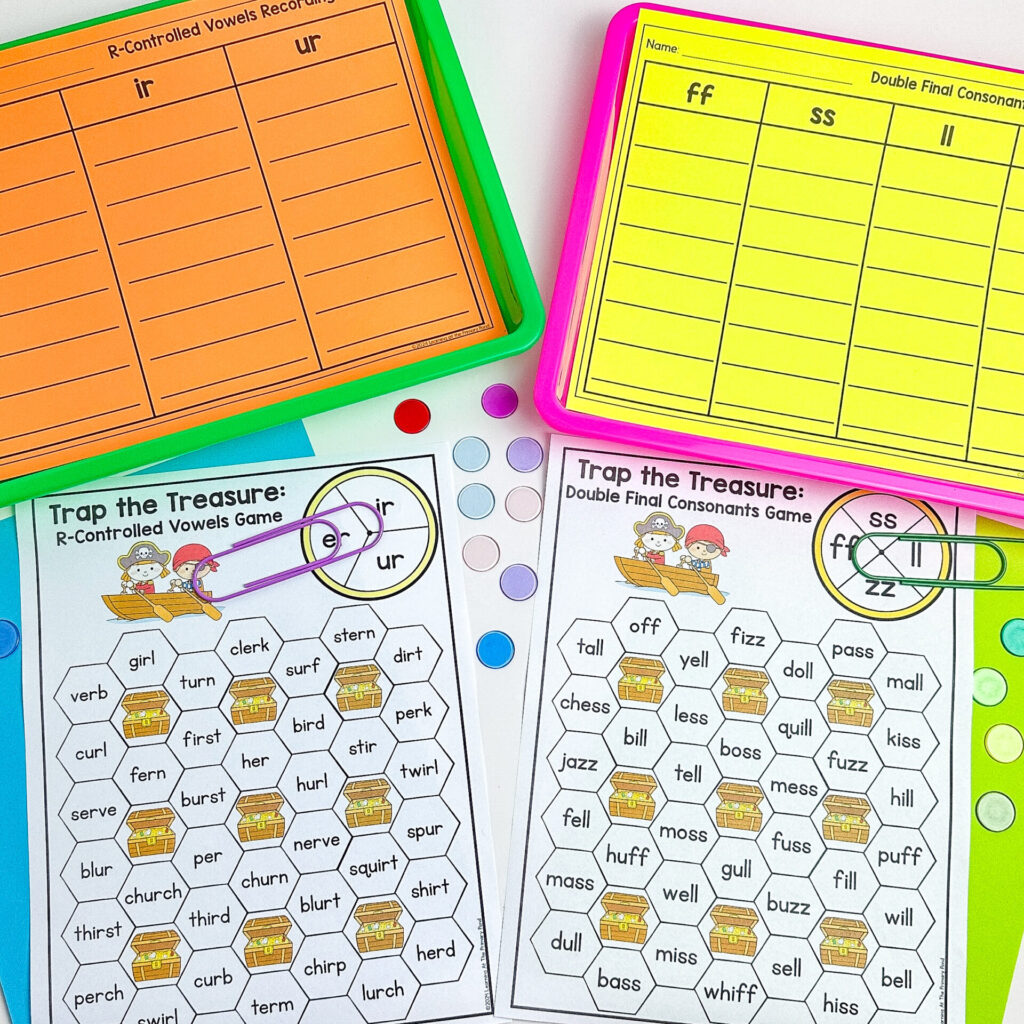
Conclusion
Effectively organizing your literacy centers requires careful planning and attention to detail! By implementing these strategies, you can create a well-structured environment that maximizes student engagement and instructional time. If you have other successful ways you’ve organized centers, please let me know in the comments!
And if you want to learn more about the Literacy Clubs and all of the centers it has to offer, click here for more info!
Happy teaching!

